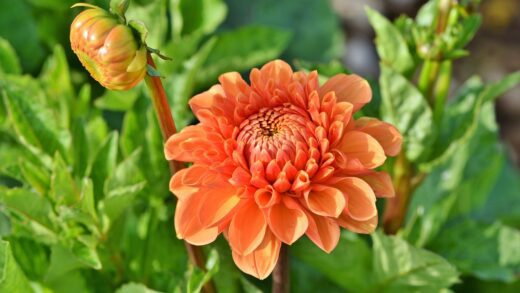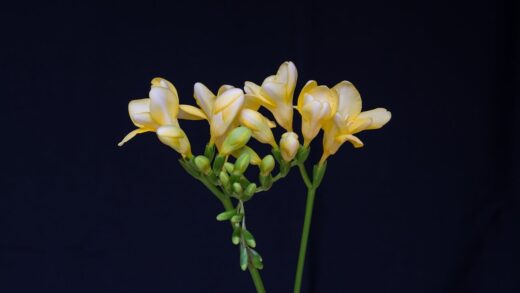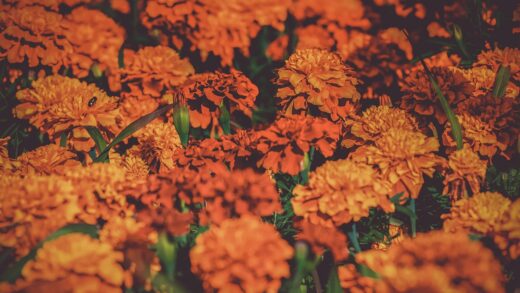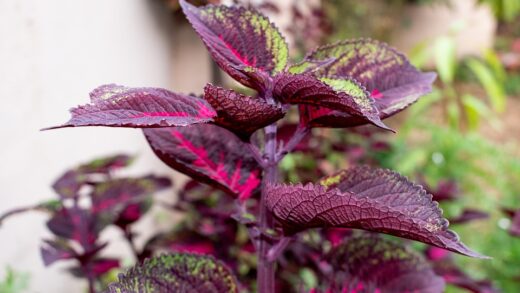Providing the correct nutrition for Lithodora diffusa is a nuanced task that is intrinsically linked to its fundamental need for acidic soil. This plant’s entire system for absorbing nutrients is adapted to a low pH environment, and its health is dictated by the availability of minerals in a specific chemical form. Therefore, any fertilization strategy must begin with the foundation of acidic soil, as applying even the best fertilizer will be futile if the soil’s pH prevents the plant from accessing its key components. The goal is not to force rapid, lush growth with heavy feeding, but rather to provide a balanced, steady supply of essential nutrients that supports healthy development and, most importantly, encourages a prolific display of its iconic, intensely blue flowers. Understanding this relationship between soil chemistry and plant nutrition is the cornerstone of a successful feeding regimen.
The most common nutritional problem encountered with Lithodora is iron chlorosis, a condition that serves as a clear and immediate indicator of improper soil pH. Iron is a crucial micronutrient for the production of chlorophyll, the green pigment in leaves responsible for photosynthesis. In alkaline (high pH) soils, iron becomes insoluble and is chemically unavailable for the plant’s roots to absorb, even if it is abundant in the soil. This deficiency manifests as a distinct yellowing of the newer leaves, while the veins remain green. If left unaddressed, the chlorosis will worsen, the plant’s growth will be severely stunted, and its ability to flower will be completely compromised, ultimately leading to its decline.
To prevent this, the primary focus must always be on maintaining an acidic soil environment with a pH between 5.0 and 6.0. This is best achieved by incorporating significant amounts of organic matter suited for acid-loving plants, such as ericaceous compost, pine bark fines, or peat moss, both at the time of planting and as an annual top dressing. These materials not only help to lower and stabilize the soil pH but also improve soil structure and provide a slow, natural release of essential nutrients as they decompose. This proactive approach to soil management is far more effective than reactive attempts to correct a nutrient deficiency once it has already appeared.
When supplementary fertilizer is deemed necessary, the choice of product is of paramount importance. It is essential to use a fertilizer specifically formulated for ericaceous plants, such as those intended for rhododendrons, azaleas, and camellias. These specialized fertilizers are designed to work in acidic conditions and have a balanced nutrient profile that is appropriate for these types of plants. They typically contain nitrogen in an ammoniacal form, which is more readily absorbed in low pH soils, and are fortified with chelated iron and other essential micronutrients to ensure they remain available for uptake and prevent deficiencies like chlorosis from developing.
Understanding the role of soil pH
The pH level of the soil is the single most important factor governing the nutrient uptake of Lithodora diffusa. Soil pH is a measure of its acidity or alkalinity on a scale from 0 to 14, with 7 being neutral, values below 7 being acidic, and values above 7 being alkaline. Lithodora is what is known as an acid-loving plant, or a calcifuge, meaning it thrives in acidic conditions and cannot tolerate the presence of lime or high alkalinity. The ideal pH range for this plant is between 5.0 and 6.0. Within this narrow window, all the essential macro- and micronutrients are in a chemical state that allows the plant’s roots to absorb them efficiently.
More articles on this topic
The primary issue in soils with a pH above this ideal range is the availability of micronutrients, especially iron and manganese. As the pH rises and the soil becomes more alkaline, these metallic elements become locked up in insoluble compounds, rendering them unavailable to the plant. This is why a Lithodora planted in alkaline soil will quickly show signs of iron chlorosis—yellow leaves with green veins—even if the soil itself contains plenty of iron. The plant is essentially starving for this crucial nutrient because the soil chemistry prevents it from being absorbed, highlighting that the mere presence of a nutrient is not enough; it must also be available.
Before planting, it is highly advisable to test the soil’s pH to determine if it is suitable. Simple and inexpensive testing kits are widely available from garden centers and can provide a good indication of your soil’s starting point. If the test reveals a pH that is too high (above 6.5), you will need to take steps to acidify the soil before planting. This is a crucial preparatory step that should not be skipped, as attempting to grow Lithodora in unsuitable soil is almost always a recipe for failure and frustration.
Maintaining an acidic pH over the long term is also important, as some soils have a natural tendency to revert to a higher pH over time, particularly if the underlying geology is limestone-based or if alkaline tap water is used for irrigation. An annual application of an acidic mulch, such as pine needles or composted bark, can help to maintain the low pH. Periodically applying soil acidifiers like elemental sulfur or aluminum sulfate can also be effective, but these should be used carefully and according to the manufacturer’s instructions, as over-application can damage the soil and the plant.
Choosing the right fertilizer
When it comes to selecting a fertilizer for Lithodora diffusa, the most important guideline is to choose one that is specifically labeled for use on acid-loving or ericaceous plants. These formulations are carefully balanced to meet the unique nutritional needs of plants that thrive in low pH soils. They are designed to counteract the potential for nutrient lock-up and ensure that all essential elements, from nitrogen and phosphorus to iron and magnesium, are readily available for the plant to use. Using a general-purpose garden fertilizer is often counterproductive, as they may have the wrong nutrient ratios or raise the soil pH.
More articles on this topic
These specialized ericaceous fertilizers typically supply nitrogen in the form of ammonium sulfate rather than nitrate. This is significant because the ammonium form of nitrogen is more easily absorbed by acid-loving plants and also has a slight acidifying effect on the soil, helping to maintain the desired low pH. The phosphorus and potassium levels are also tailored to promote sturdy growth and abundant flowering without encouraging the kind of soft, sappy growth that can be susceptible to disease. This careful formulation supports the plant’s overall health in a holistic way.
Perhaps the most critical component of an ericaceous fertilizer is the inclusion of chelated iron. Chelation is a process that protects the iron molecule, keeping it soluble and available for plant uptake even if the soil pH is slightly higher than ideal. This acts as a vital insurance policy against the development of iron chlorosis, the most common nutritional disorder to affect Lithodora. Fertilizers for acid-loving plants will also contain a full suite of other essential micronutrients, such as manganese, zinc, and copper, ensuring a complete and balanced diet.
Both granular and liquid forms of ericaceous fertilizer are effective, and the choice between them often comes down to personal preference and the specific situation. A slow-release granular fertilizer applied once in the early spring is a convenient and effective way to provide a steady supply of nutrients throughout the main growing season. For container-grown plants or for providing a quick boost to a plant showing signs of deficiency, a liquid feed applied every few weeks during spring and summer can be very beneficial. Regardless of the form, always follow the application instructions on the packaging to avoid over-fertilizing.
Application timing and techniques
The timing of fertilizer application is crucial to ensure that nutrients are available to the Lithodora when it needs them most. The single most important time to fertilize is in the early spring, just as the plant is breaking its winter dormancy and new growth is beginning to appear. This application provides the necessary fuel for the plant to produce a lush flush of foliage and, most importantly, to develop a profusion of its brilliant blue flower buds. Feeding at this time kick-starts its growing season and sets the stage for a spectacular floral display.
For garden-grown plants, a single application of a slow-release granular ericaceous fertilizer in spring is typically sufficient for the entire year. These granules are designed to break down gradually with moisture and soil temperature, releasing their nutrients over a period of several months. To apply, sprinkle the recommended amount of fertilizer evenly on the soil surface around the base of the plant, extending out to the drip line (the edge of its foliage). Gently scratch the granules into the top inch of soil or mulch, and then water the area thoroughly to activate the fertilizer and start the process of nutrient release.
It is generally recommended to avoid fertilizing Lithodora late in the growing season, particularly from late summer onwards. Applying fertilizer, especially one high in nitrogen, at this time can stimulate a flush of new, tender growth. This new growth will not have sufficient time to harden off and mature before the first frosts of autumn and winter arrive, making it extremely vulnerable to cold damage. This can weaken the overall health of the plant and reduce its ability to survive the winter, so it is best to cease all feeding by mid-summer at the latest.
For plants grown in containers, the feeding regimen needs to be slightly different. Nutrients leach out of the limited volume of potting soil much more quickly with each watering, so more frequent applications are necessary. A good approach is to use a liquid ericaceous fertilizer diluted to half-strength, applied every four to six weeks from spring until mid-summer. This method provides a consistent supply of nutrients to the plant without the risk of burning the roots that can come with over-application of granular fertilizers in a confined space. As with garden plants, all feeding should be stopped by the end of summer to allow the plant to prepare for winter dormancy.
Organic approaches to nutrition
For gardeners who prefer a more natural and organic approach, it is entirely possible to meet the nutritional needs of Lithodora diffusa without relying on synthetic fertilizers. The cornerstone of an organic feeding strategy is the regular use of acidic organic matter. Annually top-dressing the soil around the plant with a one- or two-inch layer of materials like ericaceous compost, composted pine bark, rotted pine needles, or well-decomposed oak leaves provides a wealth of benefits. This practice is best done in the autumn, allowing winter rains to break down the material and incorporate it into the soil.
As these organic materials decompose, they provide a slow, gentle, and balanced release of a wide range of essential nutrients and micronutrients. This process mimics the natural nutrient cycling found in the plant’s native heathland habitat. Furthermore, the decomposition of these acidic materials continually helps to maintain the low soil pH that is so critical for the plant’s health. This regular replenishment of organic matter also dramatically improves soil structure, aeration, and water retention, creating a healthy and thriving soil ecosystem that supports robust plant growth.
In addition to mulching, certain natural soil amendments can be used to address specific needs. For example, coffee grounds, which are typically acidic, can be worked into the soil in moderation to provide a gentle source of nitrogen and help maintain a low pH. To provide a boost of iron and combat the early signs of chlorosis in an organic garden, a foliar spray made from a seaweed extract that is rich in chelated iron can be very effective. This allows the plant to absorb the iron directly through its leaves for a quick green-up, while you work on longer-term soil improvements.
Ultimately, an organic approach focuses on feeding the soil rather than just feeding the plant. By building a rich, fertile, and acidic soil that is teeming with beneficial microbial life, you create a self-sustaining system where nutrients are naturally cycled and made available to the plant. This holistic strategy not only benefits the Lithodora but also improves the health and resilience of the entire garden ecosystem. It may require more patience than using synthetic fertilizers, but it leads to a more sustainable and robust growing environment in the long run.


















